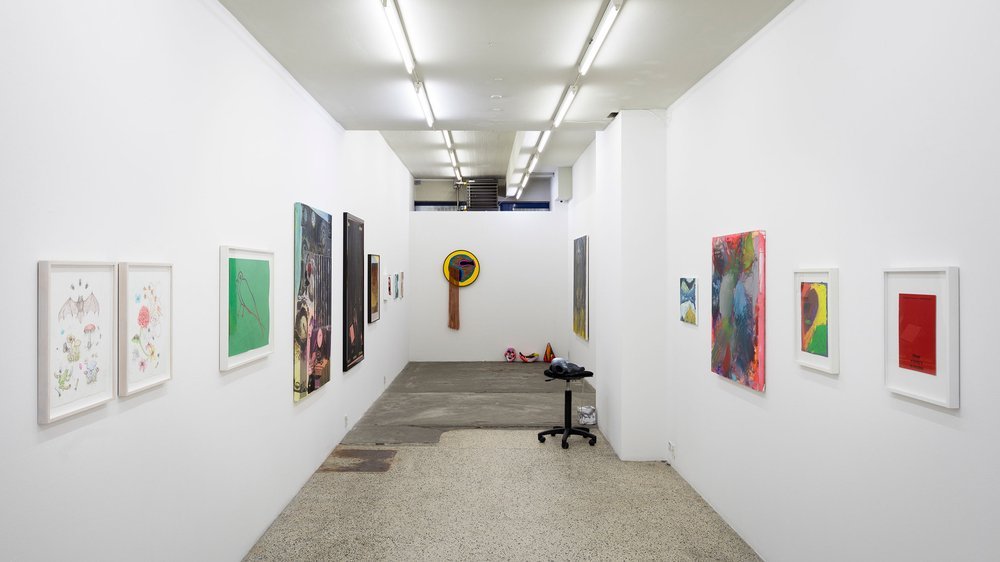Francesca Fini and her carnal fusion of physical and virtual.
*Archive Article: Originally published in the magazine Blacklisted Copenhagen on August 12, 2017
One of the things I love most about this project is diving into the research around one particular artist and how they present their work. How an artist displays and documents their work across the digital sphere can tell you a lot about how that person thinks. Which is why it was an absolute pleasure to rummaging through the back catelog of Italian multidisciplinary video and performance artist Francesca Fini.
Typically, when I begin my research for an article, my background in communication is always coloring my interpretation of an artist digital expression. Do they use social media or a website as a type of online gallery. Do they presenting finished or formulated works? Or do they use the digital platform to give glimpses “behind-the-curtain” of their process, their works-in-process, their unfinished work?
So when I started my archeological dig into the work of multi-disciplinary performance/new-media artist Francesca Fini, there was so much mew over. Her website is a virtual feast of various films works, which blur the lines between documentary film work, performance documentation, and pure optical madness.
What defines the majority of her work is the positioning of her physical self as the center object within most of her video and cinema work. While many of her peers defined within this “new media” movement, build and engineer objects and technologies which act as the artistic center of the work, Francesca Fini feels more like a performance artist who simply uses new medias and technologies to enhance that performance work.
This intrigued me a little bit, because the center of the artistic work is still human. Much of the work that leverages technology depends completely on said technology to create the audience epiphany or “wow factory.” In other words, it’s sensational simply because it is a new form of sensory overload. With Francesca Fini’s work, there is still a person driving the artistic messaging, which feels less sensational, but more impactful.
This is all personal opinion of course. And to drive a little more opportunity for you create your own opinion of Francesca Fini’s work, I exchanges a few questions with her regarding her choices of centering the majority of her experimental video work around the human form and its performance.
INTERVIEW
Your work spans the disciplines of both performance and film. Can you tell me about your interest in these areas, and how you began using them for your artistic expression?
I started about twenty years ago with video art, animation, creative documentary, and experimental cinema.
In my films, however, the abstract and symbolic action of the body in space has always had a dominant role: it has always been the fulcrum around which the “story” unfolded, if we can really speak about a “story”, dealing with the surrealist, non-narrative and non-linear language that I sue in my audiovisual work.
Then one day about ten years ago, a performance artist I knew asked me to try my hand at a live performance piece during a festival in Rome. At that point, I simply transferred one of the carnal and bodily images I had imagined for one of my videos into the fluid and contingent dimension of live art. Since then I have never stopped performing live, the dreamlike images of my films, and incorporating my performances into my movies.
I admit that mine is an attempt to hybridize two very distant languages which might seem irreconcilable to each other – almost ideologically adverse.
On the one hand, we have the historical dimension of video which records, and forever fixes and stores an experience, a dream, an idea. On the other hand, there is a performance art that celebrates fluidity, immanence, the unforeseeable, the ephemeral, and the here and now that escapes any possibility of translation and replication.
My work in recent years has been dedicated to the search for a visual language, a methodology, a process, and a system of devices that bring these two practices together on common ground, trying to respect the prerogatives of each one and exploiting their potential. My work on video performance is long research on these issues.
You work a lot with “human” elements in your work – blood, skin, pain, etc. Is there particular research, movement, or political ideology that moves you to explore these thresholds? Tell me about that.
The bodily as a carnal element is a universal emotional code that becomes a collective political language. The body is our first and last device for interacting with the outside world and with other beings. The body is something that everyone knows and understands – the dictionary of our common transient and fragile nature – as everyone knows to suffer.
I use the body as a vector of universal concepts, of shared experiences. This process is part of my need to move in the dimension of concreteness, of art that does not need captions and which should not be explained, within everyone’s reach, understandable to everyone, regardless of your age, your gender, the culture you come from.
Aside from your video and performance art, you’ve also created a series of short films and documentaries. Tell me how you separate these two different creative outlets.
This versatility responds to my many interests. Among these, there is also a great passion for experimental animation, the world of 3D and virtual reality, and, simultaneously for the cinema of the real. I would say that I am a concentration of contradictions, even if, in my work, I believe that everything responds to the same logic: to interpret the world and myself with all the means at my disposal.
In my 2D and 3D animations, there is always a deeply performative and underground atmosphere. My avatars and my virtual characters, created almost always with the technique of collage, never perform naturalistic actions, there is never an attempt at verisimilitude, but they always move in an abstract dimension, they perform symbolic, poetic actions, framed by a deeply dirty and lo-fi aesthetic.
Even in my documentaries, reality, as it presents itself, is banned. My flesh and blood characters reinterpret and re-enact their story through the symbolic action of performance art. I would say that the common denominator is the surrealist language, which forces you to overcome your position as part of an audience to whom someone tells a story, and begin to imagine unpredictable outcomes, on your own.
In a world where video art can completely bypass the necessity for a gallery space or white cube, how do you feel about the thought of your work being more accessible to more people than could ever walk through a gallery?
I am a little allergic to art galleries, also because video art in galleries is almost never valued as it deserves. It is as if, despite this language having been around for around sixty years, the galleries are still poorly equipped to host it in a way that does it justice.
Furthermore, the art exhibition is a ritual that puts you in a very special position, as an artist – a position that I don’t really like that much. I tend to diversify the channels through which I spread my work. Many of my feature films, especially “Ofelia non annega” and “Hippopoetess”, have a format and care for the sound that requires the traditional movie theatre.
My project “Performance Art TV,” curated together with the friend artist Paola Mineo, is conceived for the Facebook LIVE platform – Performance Art TV is the first Italian social tv completely dedicated to the live streaming of performance artworks. Also, these days, I’m developing a virtual reality work, which will be downloadable on your mobile phone. I think that the right “venue” depends on the specific nature of the project.
With that said, do you still enjoy displaying your work in a gallery space? How is the experience different for you?
Lately, I’ve had the chance to exhibit in fantastic galleries with great curators, and very intelligent and provocative concepts – like the ‘UN-BECOMING’ exhibition at the SomoS Art House in Berlin, dedicated to eroticism and pornography in the digital arts.
The experience is different because in art galleries there is this ritualistic filter that is created between the artist and the audience, which in my opinion – but it is MY opinion – nullifies every possible authenticity. Of course, this changes when I perform in art galleries because in that case, people do not come “to see,” but to have an experience.
Looking back over the long history of your work, how do you feel it has evolved? And where do you think it is going from here?
There is a progressive simplification in the concepts of my works and at the same time a radicalization in the aesthetics of which I am more and more responsible and aware. Like when you are studying a new language: it takes a lot of practice and time to penetrate its inner logic.
It’s like I began to master my own language, to finally understand its guidelines. And so I’m now able to condense, to say the same things in a more direct, strong, and effective way. I began to remove matter, to reveal the essence. I do not know where this ongoing process will bring: it’s very similar to Zen practice and I hope I can bring even a bit of lighting.








